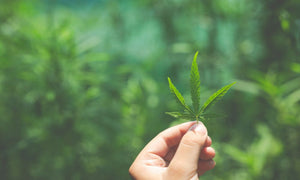20 Daily Practices from Ancient India to Prevent Lifestyle Diseases

The World Health Organization (WHO) reported that 80% of the emerging world’s population relies on traditional medicine for therapy. There is a growing awareness of healthy & natural lifestyle practices as effective disease prevention and management tools. Plenty of these lifestyle hacks have been unearthed from the time-tested wisdom of zhong-yi (traditional Chinese medicine), ayurveda (traditional Indian medicine), African plant medicines, tai-chi, yoga, ancient Egyptian practices, etc.
There is no doubt that these techniques are time-tested, natural, usually harmless, and highly effective in the prevention and treatment of both physical and mental illnesses. Adopting these lifestyle practices can introduce the basic principles of these ancient modalities in our modern lives, thus ensuring overall health and wellbeing while preventing and managing different lifestyle diseases.
Ancient Indian Habits to Boost Your Health
Here are 20 unique daily practices from ancient India that can help us prevent lifestyle diseases:
Create & Curate Your Food Consciously
Though processed, canned, frozen, and packaged food was not a thing back in those vintage worlds, ancient Indians believed that food prepared with personal attention and love nourished the body and refreshed the mind, while food made without mindful emotions does create ‘ama’ or toxins in the body. So whether it is a raw salad or a full-spread meal, it is always more beneficial if what you are offering to your body is prepared with awareness and love. Conscious cooking is considered a therapeutic experience in itself, known as ‘Annayoga’ or ‘Food Yoga’ in Sanskrit.
Drink your herbs
Herbal teas or tisanes are beverages made from the infusion or decoction of herbs, spices, or other plant material in hot or cold water. When consumed within a balanced diet, herbal beverages may improve the antioxidant status and reduce human oxidative stress.
Use food as medicine
Ayurveda uses spices, herbs, bark, roots, peels, seeds, vegetables, and fruits to heal the body because disease is just a way of the body asking for special care and nurturing. Ayurveda does not attack a disease with medicines but rather helps the body to come back to balance so that our biological intelligence can kick in, and we can heal on our own.
Ancient Indians had natural kitchen remedies and food-based solutions for nearly every ailment of the body and mind. Using these tips and hacks in our daily lives can not only prevent us from succumbing to all the side effects of the pill-popping culture of conventional Western medicine but also be easier on our pockets!
Fast regularly
While Intermittent Fasting(IF) is a blazing health trend worldwide today, ancient Indians practised fasting as a general way of life. The digestive system is called ‘Udara Agni’ in Sanskrit. Ayurveda believes that regular fasting is needed to give rest to our Udara Agni, and thus revitalise it. Fasting also detoxes the system, helps improve immunity, and regulates metabolism.
Warning: Fasting is a complex and highly customised practice and needs to be undertaken under the guidance of a medical or wellness professional after evaluating the patient's overall health, lifestyle, and body condition. Irresponsible fasting can put your health at risk.
Drink your food, chew your water!
No, that is not a typo! While there are various theories about how many times one must chew one’s food, the simple rule is: Chew till you can drink it! Yes, food needs to be nearly liquified in our mouth before gulping it down, so the body can easily assimilate it without putting excessive load on our digestive system. Complete chewing allows complex carbohydrates, sugars, oils, proteins, and other minerals to reach maximum absorption levels.
Water needs to be moved around in the mouth before we swallow it. This helps the alkaline saliva reach the stomach to neutralise acid levels in the stomach.
Detox periodically
Scientifically, the body does not require our help to detox. The natural systems of the body release toxins on their own. So detoxification just means aiding the process from time to time. This is needed more today, considering the toxic lifestyle practices we have all adapted ourselves to, which in ancient times were unheard of. You can practise daily or weekly detoxing depending on your comfort and need.
Excrete mindfully
In ancient India, excretion was a mindful activity, usually done in the yogic posture ‘Malasana’, also known as the yogi squat. One was not allowed to talk or engage in any other activities at this time. Our state of mind is directly connected to our gut, and practising deep breathing and conscious silence while passing stools and urine can ease many chronic excretory issues like constipation, inconsistent bowel movements, etc.
Eat in silence or in laughter
Along similar lines, mindful eating - either in silence or giggling over deep & happy conversations with loved ones, helps promote better digestion, keeps us full with less food, and helps balance our metabolic hormones by associating food with a peaceful and happy state of mind.
Watch your intake
According to ancient Indians, ‘Aahaar’ or intake encompasses everything we consume, including but not limited to food. In other words, from the movies we watch to the company we keep, from the news we read to the gossip we listen to, from the music we hear to the posts we see on social media - everything is intake or Aahaar. Everything affects the overall condition of our body and mind.
Massage yourself
Abhyanga, or massaging your skin with warm (sometimes herbalised) oils, is one of the most potent acts of self-care. Touch is our most powerful sense and largest organ because it never goes off! And when we touch and knead our own selves into a nice massage, it makes our brain release endorphins and oxytocin, improves blood circulation, helps the body detox, improves self-love, relieves locked stress and tension, slows ageing and strengthens muscles and joints. So go ahead, be your own master masseur!
Do Neti Wash
Neti is an ancient yogic practice of flushing the nasal passages with warm saline water using a simple kettle-like pot called a neti-pot. It helps cleanse your nostrils and sinuses from all the toxins, pollutants, and allergens, allowing you to breathe freely and comfortably. Clean and clear breathing by itself is healing and can prevent disease, besides ameliorating digestion, mental well-being, and immunity.
Practice Oil Pulling
Oil pulling is known as "kavala graha" or "gundusha" in Sanskrit. It is an ancient Ayurvedic technique of swishing a tablespoon of oil in your mouth on an empty stomach for a few minutes and then spitting it out. This action is excellent for dental hygiene & health and also draws out toxins in the body.
Scrape your tongue
All that we eat and drink passes through our tongues. Keeping our tongue clean is vital to ensure our body is not continuously absorbing toxins. Tongue scraping or jiwha-prakshaalan removes volatile sulfur compounds (VSCs) that build up on our tongue, causing mouth odour. Tongue scraping also boosts immunity, aids digestion, and activates taste buds.
Go for walks
Ayurveda considers walking as a tridoshi exercise - in other words; it balances the three doshas (kapha, pitta, vata). Balancing the three doshas is believed to lead to health and well-being. According to the Mayo Clinic, regular brisk walking can help you maintain a healthy weight, prevent or manage various conditions, including heart disease and high blood pressure, strengthen your bones and muscles, improve your mood, and improve your balance and coordination.
Practice Asanas
Practicing yogic postures or Asanas can reduce stress, lower blood pressure, keep off weight, improve cardiovascular health, strengthen immunity, and improve metabolism - hence maintaining optimum health and well-being.
Do some deep breathing
Deep breathing (sometimes called diaphragmatic breathing) is a practice that enables more air to flow into your body and can help calm your nerves, reducing stress and anxiety. It can also help you improve your attention span and lower pain levels. Taking 5-minute deep breathing breaks about 5-6 times a day can go a long way in preventing diseases and keeping us healthy.
Pranayama(conscious & healing breathwork) also helps reduce stress, lowers inflammation, and helps alkalize your blood PH levels.
Meditate
Meditation has been linked to larger amounts of gray-matter in the hippocampus and frontal areas of the brain. More gray-matter can lead to more positive emotions, longer-lasting emotional stability, and heightened focus during daily life.
Talk to yourself
In ancient Indian philosophy, they call this Mananam - the act of having deep heart-to-heart conversations with yourself. It may sound crazy at first, but talking to yourself in your mind can lower stress levels, improve self-image, and release the happiness-hormone serotonin. You can talk to yourself mentally in silence, audibly in the mirror, or writing through a journal.
A study was conducted at Michigan State University. Researchers monitored the brain activity of 29 students. These participants were asked to review a few neutral and disturbing images. They were also asked to explain how they felt while referring to themselves in the first and third person. It was concluded that "third person self-talk" allowed participants to regulate their emotions, and they experienced better stress relief.
So, start fixing up those rewarding appointments with yourself.
Sleep more
Sleeping as much as you need and want aids in better hormonal balance, rejuvenates mental health, enhances skin texture, improves immunity, aids metabolism, and increases overall body stamina. An ancient Indian quote goes, ‘Nidraa samadhi-sthitih’ meaning, good restorative sleep is equivalent to a deep calming meditation. Always aim at catching more shuteye! Turning in earlier is a great way to add more quality and quantity to your night naps.
The World Health Organization has officially classified night shift work as a probable carcinogen as it interferes with our body’s natural sleep cycles. The Ivy League Harvard Medical School stated that good quality sleep reduces the risk of chronic, life-threatening diseases, including cancer.
Connect with Nature
Scientists are beginning to find evidence that being in nature profoundly impacts our brains and behaviour, helping us reduce anxiety, brooding, and stress and increasing our attention capacity, creativity, and ability to connect with other people.
Ancient Indians believed that we are all a part of ‘nature’ and that all of existence is one natural whole! Hence, great significance is given to connecting with nature - not just climbing mountains, bathing in rivers, swimming on beaches, walking on grass, hugging trees, talking to birds, cuddling animals, admiring the stars, or watching the rain! It also means climbing the tedious mountains of self-love, swimming in oceans of introspection, hugging all our facets with equal acceptance, admiring the gifts we hold in us, and truly connecting with our own inner nature.
Studies have also found that self-connection induced higher parasympathetic activity in participants, promoting stress reduction and emotional regulation on a physiological level, while lower levels of self-connection have been associated with mental health concerns like anxiety, depression, and post-traumatic stress disorder.
Ancient Indian Lifestyle Practices
Exploring ancient Indian lifestyle practices in Ayurveda that are often overlooked today but hold valuable insights:
1.Dinacharya (Daily Routine):
In Ayurveda, adhering to a specific daily routine, or dinacharya is essential for overall well-being. This includes practices like tongue scraping, oil pulling, and specific morning rituals tailored to individual doshas. So, it is important to include these practices in your daily routine.
2.Seasonal Eating:
Ayurveda emphasises adjusting dietary habits according to seasons and considers the impact of weather on body balance. Modern lifestyles often overlook this practice, leading to potential imbalances. This practice will enhance a healthy lifestyle.
3.Herbal Preparations:
Traditional herbal formulations for various health concerns were prevalent in Ayurveda. Today, reliance on pharmaceuticals has reduced the use of these natural remedies.
4.Fasting Practices:
Ayurveda recommends periodic fasting for detoxification and balancing doshas. Modern dietary habits often lack structured fasting routines.
5.Yoga as a Lifestyle:
Yoga, integral to Ayurveda, was originally perceived as a lifestyle incorporating physical postures, breath control, and meditation. In modern times, yoga is often approached as a fitness routine rather than a holistic lifestyle.
6.Mindful Eating:
Ayurvedic principles emphasise mindful eating and considering food as medicine. However, contemporary eating habits often involve rushed, on-the-go meals, neglecting the importance of mindful consumption. Hence, it is essential to concentrate on the food while eating.
7.Balancing Work and Rest:
Ayurveda advocates for a balance between work and rest. Modern lifestyles, characterized by long working hours and constant connectivity, often overlook the importance of adequate rest.
8.Dosha Balancing:
In ancient India, we focused on understanding and balancing three doshas—Vata, Pitta, and Kapha—unique to each person. By figuring out your dosha, you should customize your diet, daily habits, and treatments to bring harmony and boost your overall health. It is like creating a personalized plan to keep your body, mind, and spirit in the best shape possible.
Reintroducing these Ayurvedic practices into contemporary lifestyles can contribute to holistic well-being, aligning with the ancient wisdom of maintaining balance and harmony in daily life.
Ancient Indian Food
Ancient Indians embraced a diet based on fresh and seasonal foods, including a variety of grains, lentils, and homemade dairy products from locally raised cows. They prioritised traditional cooking methods, such as earthen pots and slow cooking, to preserve nutrients and flavours. Here are a few ancient Indian food facts:
- Ancient Indians primarily included fresh and natural foods in their daily diet. They varied according to the seasonal produce and switched their diet according to the availability of seasonal vegetables and fruits.
- Ancient Indians relied on staples like grains and pulses, with the Rig Veda even mentioning popular lentils. Red, black, and green lentils were commonly consumed, along with a variety of grains like wheat, barley, rice, maize, jowar, and bajra.
- Ancient Indians incorporated a variety of homemade dairy products into their daily diets, including fresh milk, curd, ghee, buttermilk, butter, and paneer, obtained from domestically raised cows.
- While pressure cookers and non-stick pans offer convenience today, traditional methods like earthen pots and slow cooking were valued for retaining food nutrients and preserving flavours in the past.
Ancient Indian Food Recipes
India, a diverse land with numerous cultures and religions, boasts a culinary heritage that spans around 8000 years. Over time, numerous recipes have been lost, and we aim to preserve those culinary treasures for generations to come. Here are a few ancient Indian food names:
- Pani ki roti
- Phulkari pulao
- Sannata raita
- Shufta Kanaguchhi
- Saas ni macchi
- Dadphe pohe
- Tootak
- Spinach roti
- Gundruk
- Basle soppu palya
Conclusion:
When a particular disease is categorised as a ‘lifestyle’ disease, it must be treated through ‘lifestyle’ shifts and not necessarily by using medicines alone. While it is not encouraged to start, stop, or change the dosage of prescription medicines without consulting a health professional, it is important to know that following a healthy, intuitive, stress-free lifestyle can go a long way in not only preventing the onset of lifestyle diseases, but also in managing or even reversing certain chronic conditions. It all begins with curating a lifestyle that heals & nurtures your life!
Frequently Asked Questions
Q: How ancient Indian people used moulds to treat infection?
A: Ancient Indian people used moulds, specifically from the fungus Penicillium, to treat infections. They applied mouldy bread or other substances containing these moulds to wounds, harnessing the antibiotic properties of the mould to combat infections.
Q: What kind of food did ancient India eat?
A: Ancient Indians ate a diverse diet based on grains, lentils, vegetables, and fruits. They also consumed dairy products, including milk and ghee, and occasionally included meat in their diet.
Q: What is the oldest Indian food dish?
A: One of the ancient dishes with a long history is "Khichdi." This simple dish of rice and lentils is nutritious and has been a staple in Indian cuisine for centuries.
Q: What did ancient Hindus eat?
A: Ancient Hindus had a diverse diet centered around grains, vegetables, fruits, dairy, and legumes. They followed a vegetarian lifestyle for spiritual and ethical reasons, with some incorporating fish or meat occasionally.
Q: Which healthy food is originally from India?
A: A healthy food originally from India is turmeric, known for its medicinal properties. Turmeric is a spice commonly used in Indian cuisine and celebrated for its anti-inflammatory and antioxidant benefits.
Q: What Indian food did not originate in India?
A: Potatoes, tomatoes, and chilli peppers are a few examples of Indian foods that did not originate in India. They were introduced to the country through historical trade and cultural exchanges.







